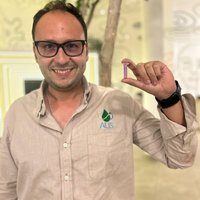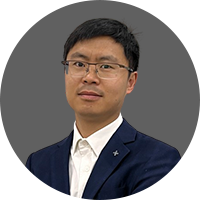Energy & sustainability
Wenzhu Liu
A mass fabrication technology for flexible monocrystalline silicon solar cells.

Latin America
Ricky Cassini
Produces natural food colorants from fungi with better characteristics than their petroleum-based alternatives.

Global
Sivaranjani Seetharaman
Developed models to evaluate how electricity systems will respond to soaring levels of demand.

Latin America
Jazmin Salazar
Combatting the climate emergency by monitoring and capturing CO2 and other gases emitted by industries.

Latin America
Ramón De Hoyos Cantú
Its microalgae capture CO2 and produce natural molecules useful for cosmetics while cleaning water.
